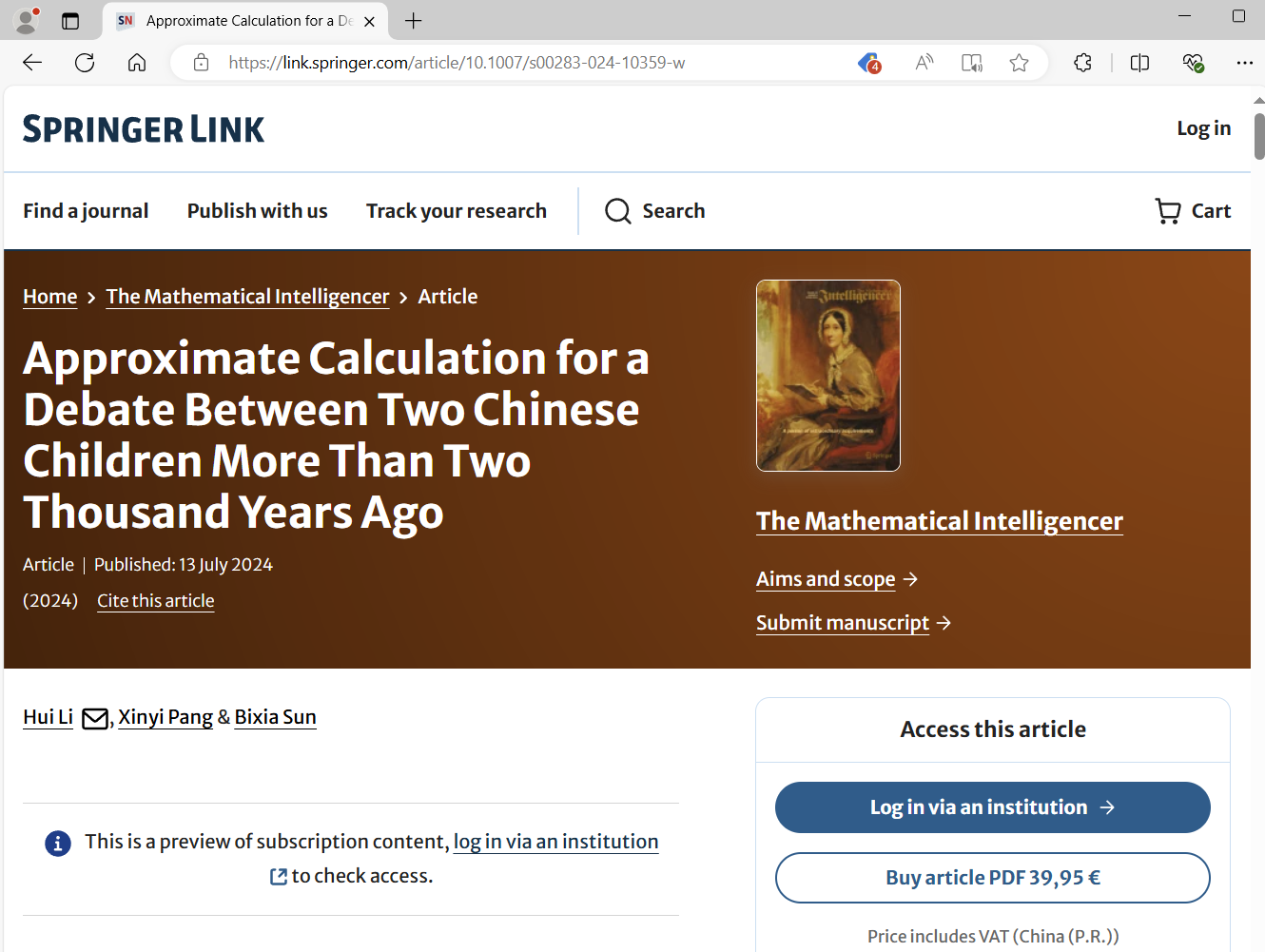“When the Sun has just risen, it appears as big as a carriage cover, but by noon, it appears as small as a plate. Isn’t it that it looks smaller from a distance and bigger up close?” “When the Sun has just risen, it feels cool, but by noon, it becomes as hot as putting your hand in hot water. Isn’t it that it feels hot when it’s closer and cool when it’s farther away?” This argument, posed to Confucius over 2,000 years ago, may have puzzled many students.
In July 2024, the paper "Approximate Calculation For The Debates Between Two Chinese Children More Than Two Thousand Years Ago," written by Prof. Hui Li, was published in the journal "Mathematical Intelligencer" (0343-6993). The full text can be found at: https://rdcu.be/dNIh1. The authors estimated the distance between the observer and the Sun, which caught the attention of many international scholars. A French astronomer also validated these estimates using data from the Paris Observatory (see the appendix). They concluded that in Qingdao, there are about 128 days a year when the morning is closer to the sun than at noon, while the remaining 237 days it is farther away.
Today, we can reach the above conclusion thanks to the research achievements of Newton, Kepler, and Halley. However, over 2000 years ago in ancient China, it was already highly valuable to raise this question. We believe that more and more stories of ancient Chinese science will gain the attention of international scholars.

